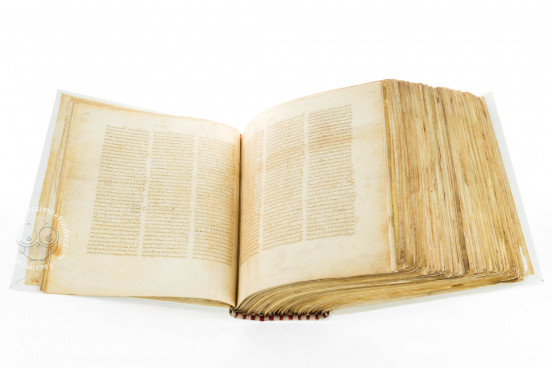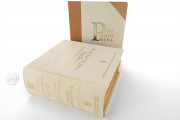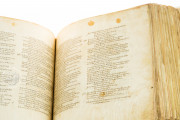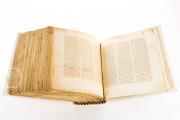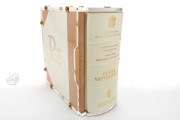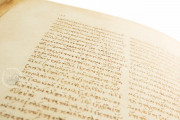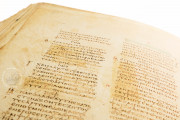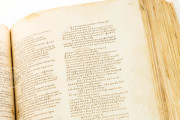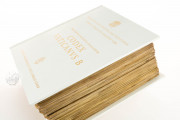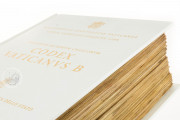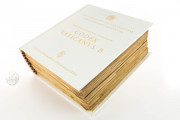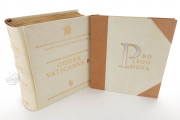The Codex Vaticanus (also known as The Vatican, Bibl. Vat., Vaticanus Graecus 1209; no. B or 03 Gregory-Aland, δ 1 von Soden) preserved in the Vatican Library is one of the oldest finely made manuscripts of the Greek Bible and one of the four best examples of uncial codices. It has been dated to the fourth century and includes both the Old and the New Testament on 759 vellum leaves.
Vatican Codex B : Missing Leaves and Collation History
Written in Greek, the Codex Vaticanus B takes its name after the Vatican Library, where it has been conserved since the fifteenth century. Several scholars took part to the collation of this exquisite codex, causing several errors in the process. Indeed, this might have led to the different order of the codex's Old Testament as opposed to the one in the Codex Alexandrinus.
Both Testaments had or still have missing leaves, in both some were restored by a later hand in the fifteenth century; and those supplemented in the New Testament (fols. 760-768) were cataloged separately as the minuscule Codex 1957. Originally, the Codex Vaticanus B was probably composed of 830 leaves divided in 617 sheets of the Old Testament and the New Testament of 142 sheets.
How Many Scribes Wrote the Codex Vaticanus?
According to some scholars, the Codex Vaticanus B was written by three scribes (A, B, C), two appointed for the Old Testament and one for the New Testament. Furthermore, two correctors could have worked on the codex: one contemporary with the scribes, and the other at a later time, possibly in the tenth or eleventh century. Unfortunately, this view is speculative and has been rejected by other scholars.
Glosses, corrections, and additions to the text seem to suggest a regular use of the Codex Vaticanus B. Unfortunately, however, it is difficult to date and locate these interventions. The scribe who retouched the text shows extraordinary ability, and this would either indicate a tremendous mimetic skill or that perhaps he worked in an era not too far from the original.
The cursive writing later added to the text can be dated to the second half of the twelfth century. Other additional features are the colorful banners and initials that mark the beginning of each book; these motifs seem to echo the tenth century decoration typical of Constantinople, but their execution is clumsy and bastardized, which would point to the eleventh or twelfth century.
Biblical Uncial
The 830 leaves – comprising very thin sheets of carefully prepared parchment – are an example of a beautiful script known under the name of biblical uncial or biblical capital. The text is structured along three columns with letters disconnected from one another and with no word separation. The lettering is tidy and without ornamentation, punctuation is rare with the exception of diaeresis on iotas and upsilons; accents and breathings present in the text is the work of later hands.
Provenance and Origin of the Codex Vaticanus Graecus 1209
Still unknown is the identity of the patron and commissioner. It is however conceivable that the Codex Vaticanus B was kept in Caesarea in the sixth century along with the Codex Sinaiticus, as both codices are mutually consistent in the division of chapters in the Acts. Since it came to Italy – probably after the Council of Florence (1438-1445) – it has been preserved in the Vatican Library founded by Pope Nicholas V in 1448.
The existence of the Codex Vaticanus B was acknowledged only in the sixteenth century when scholars were informed about it, as a consequence of a correspondence between Erasmus of Rotterdam and the prefects of the Vatican Library, Paulus Bombasius and Juan Ginés de Sepúlveda.
We have 1 facsimile edition of the manuscript "Codex Vaticanus B – Graecus 1209": Bibliorum Sacrorum Graecorum Codex Vaticanus B facsimile edition, published by Istituto Poligrafico e Zecca dello Stato, 1999
Request Info / Price
